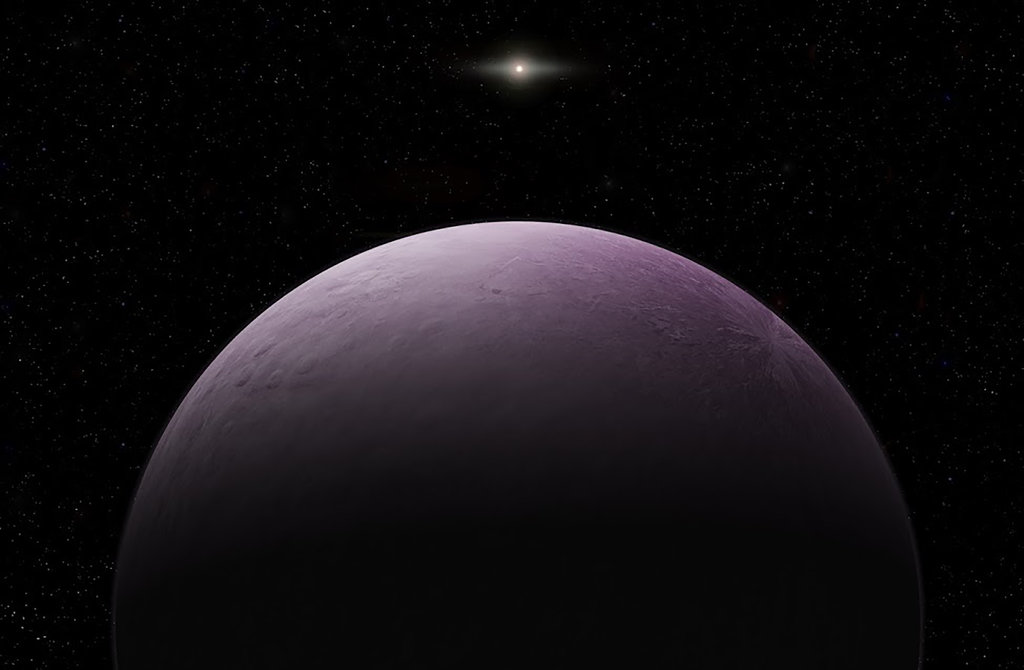Researchers recently announced the discovery of the farthest object ever identified within our solar system. Designated 2018 VG18 and nicknamed Farout, the object is located about 120 astronomical units (AU) from the Sun, or 120 times the average Sun-Earth distance. For comparison, the second most-distant object known in our solar system, Eris, orbits the Sun at a distance of 96 AU, while Pluto's approximate distance is 34 AU. Like those other two bodies, Farout is likely a dwarf planet, with a diameter of about 500 km (311 mi), suggesting it possesses enough mass to have assumed a spherical shape under the force of gravity. See also: Astronomical unit; Astronomy; Gravity; Mass; Planet; Pluto; Solar system; Sun

A team of astronomers initially came upon Farout in November 2018 during a deep search for distant objects using the Subaru 8-meter telescope located atop Mauna Kea in Hawaii. Additional observations from the Magellan telescope in Chile aided in confirming Farout and gathering preliminary information regarding its characteristics. Similar to other astronomical bodies populating the outer solar system's Kuiper Belt, Farout was found to have a pinkish color, consistent with an ice-rich composition. See also: Astronomical observatory; Color; Kuiper Belt; Subaru Telescope; Telescope
Of great interest is Farout's orbit, which has not yet been precisely determined. The orbits of some other bodies in the region beyond Pluto appear to be under the gravitational influence of a highly massive, hypothetical world dubbed Planet Nine. First proposed in 2015, Planet Nine remains a primary target of significant observational efforts, including those that spotted Farout. It is hoped that additional tracking of Farout could help point to Planet Nine, should it exist. Alternatively, Farout's path around the Sun would shed light on the puzzling orbital motions of its fellow remote members of the solar system. See also: Orbital motion





